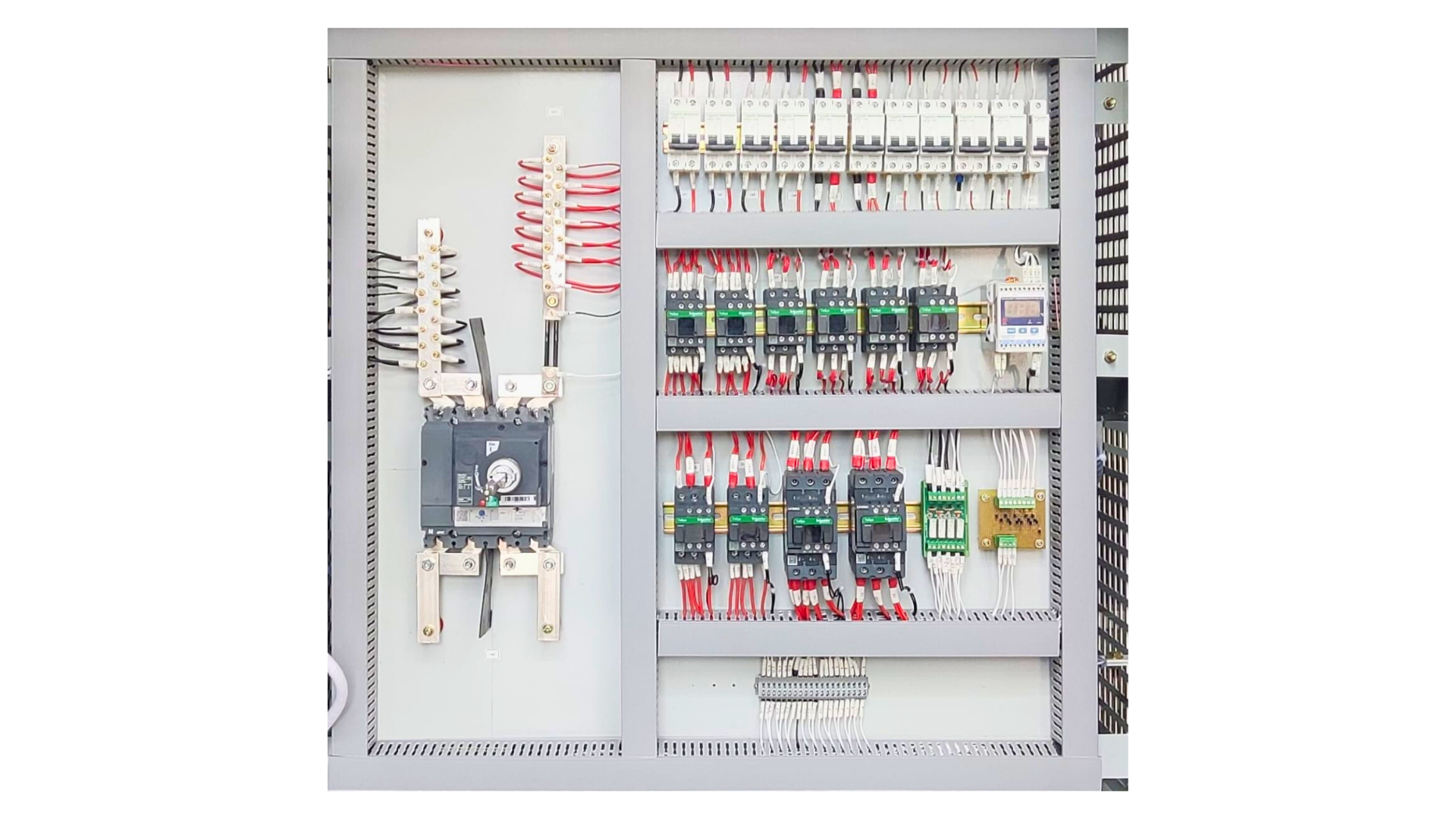BUILT ON EXPERTISE. DRIVEN BY EXCELLENCE.
LOAD BANKS

Descriptions:
- These panels consist of Resistors and inductors of different values, depending on the input voltage and current requirement and steps of power change required, complete with switches, volt meter, ammeter, energy meter etc.
- PLC based auto setting systems can also be provided
Applications:
- Generator testing and others.
Specifications:
- Voltage Line to Line – The voltage measured between two phase conductors in a multi-phase system, essential for determining power supply compatibility (e.g., 230V, 400V, or 480V).
-
- Phases (1/2/3, 3 Wire/4 Wire) – Specifies the electrical system configuration, indicating whether it is single-phase, two-phase, or three-phase with either a 3-wire (without neutral) or 4-wire (with neutral) setup.
-
Frequency (Hz) – The operating frequency of the electrical system, typically 50Hz or 60Hz, ensuring compatibility with power grids and connected equipment.
Total Power Resistive (kW) – The total active power consumed by resistive loads, such as heating elements, measured in kilowatts (kW).
Total Reactive Power Inductive (kVA) – The power drawn by inductive loads (motors, transformers) that do not contribute to useful work, measured in kilovolt-amperes reactive (kVAR).
Step Power (kW) – The incremental power capacity that can be switched on or off in stages, helping to regulate load distribution.
Step Reactive Power (kVA) – The incremental reactive power capacity that can be added or removed in steps to maintain power factor and efficiency.
Minimum Power Factor (P.F.) at Load – The lowest acceptable power factor during operation, indicating how efficiently electrical power is converted into useful work.
Maximum Power Factor (P.F.) at Load – The highest achievable power factor, ideally close to 1.0, ensuring minimal energy losses and optimal system performance.


